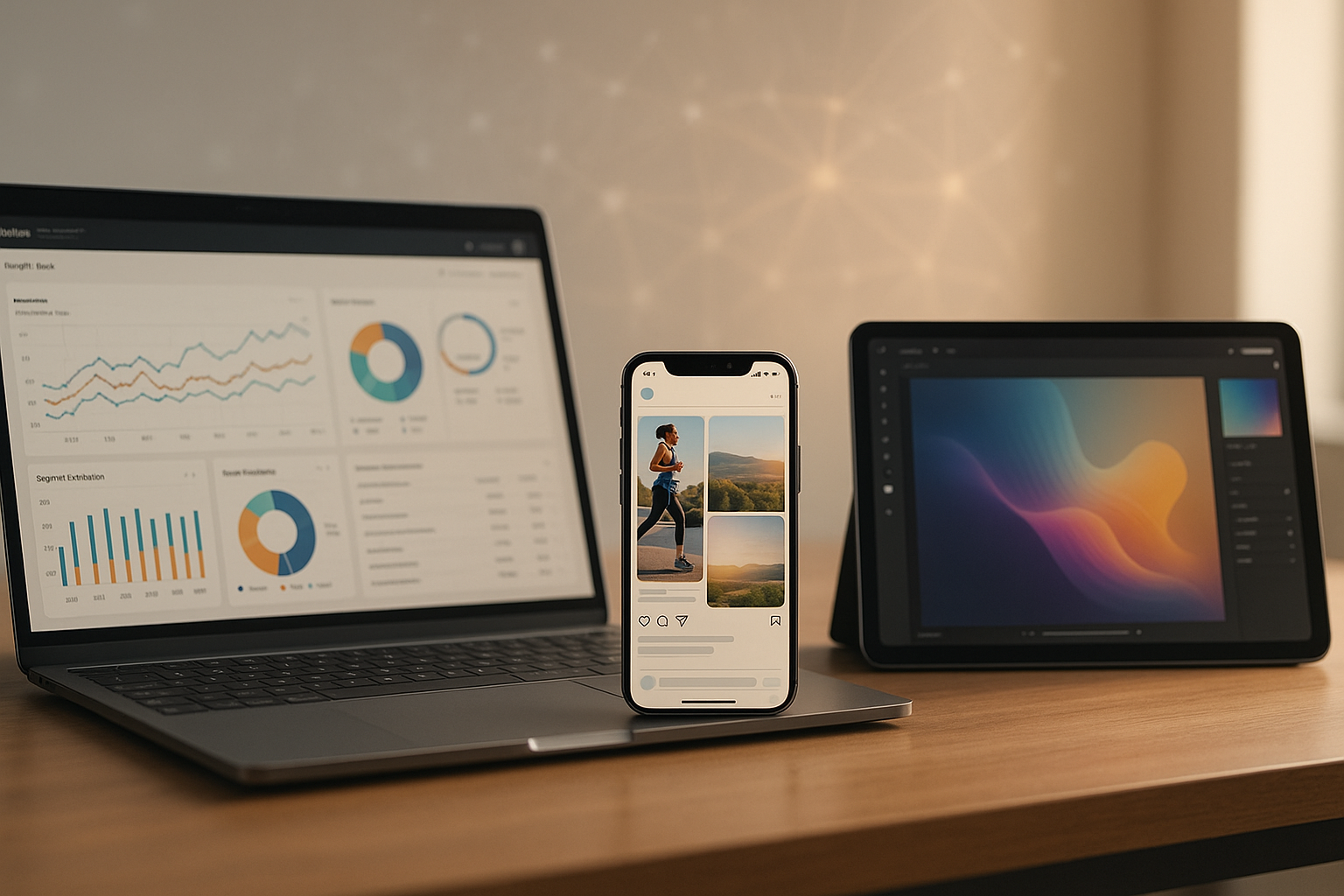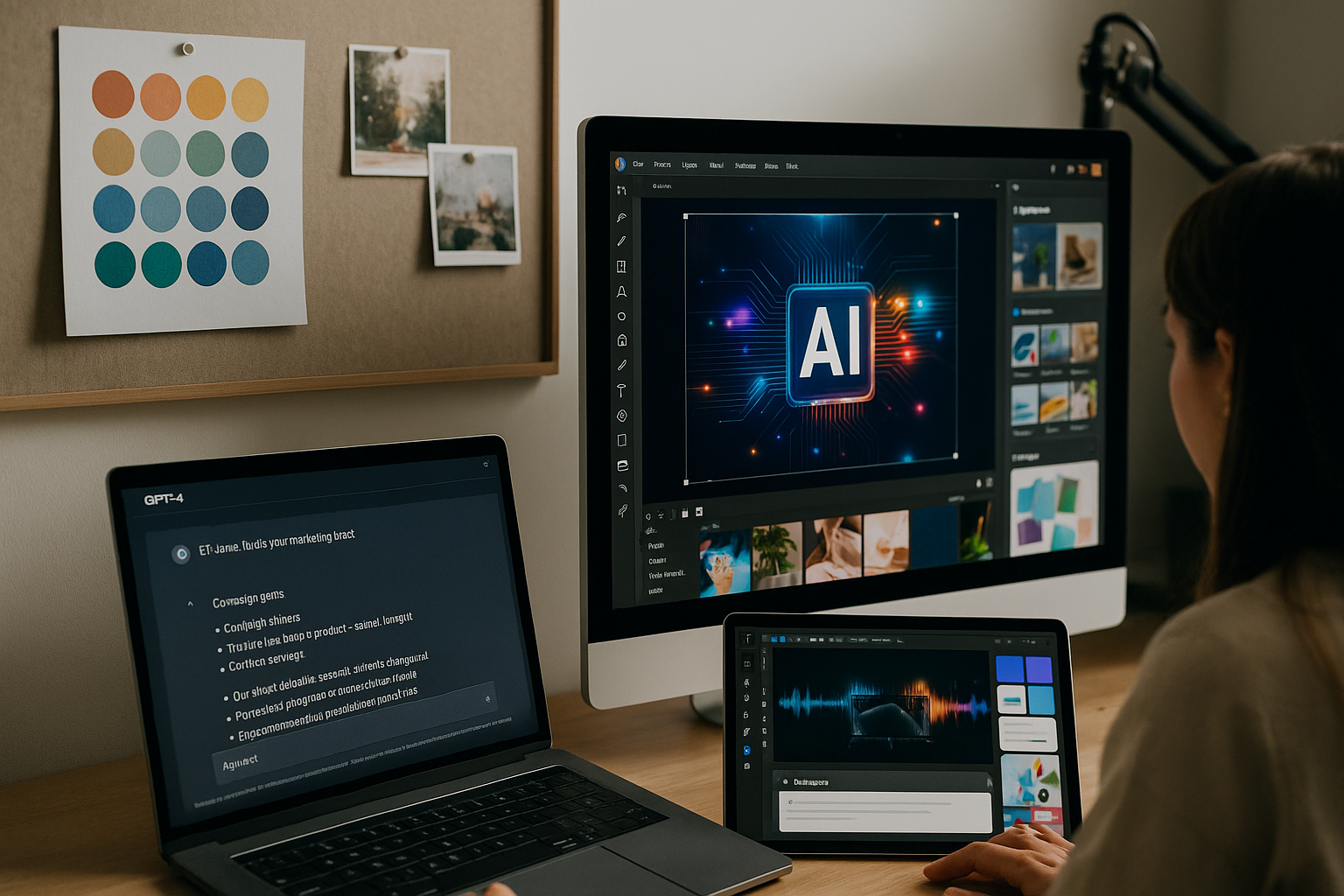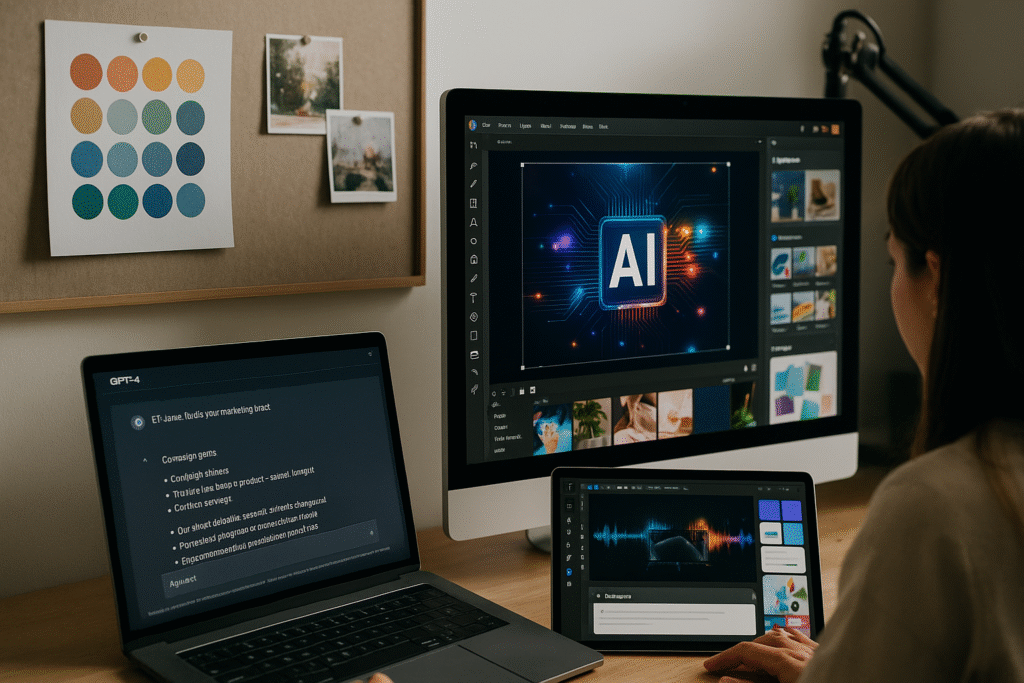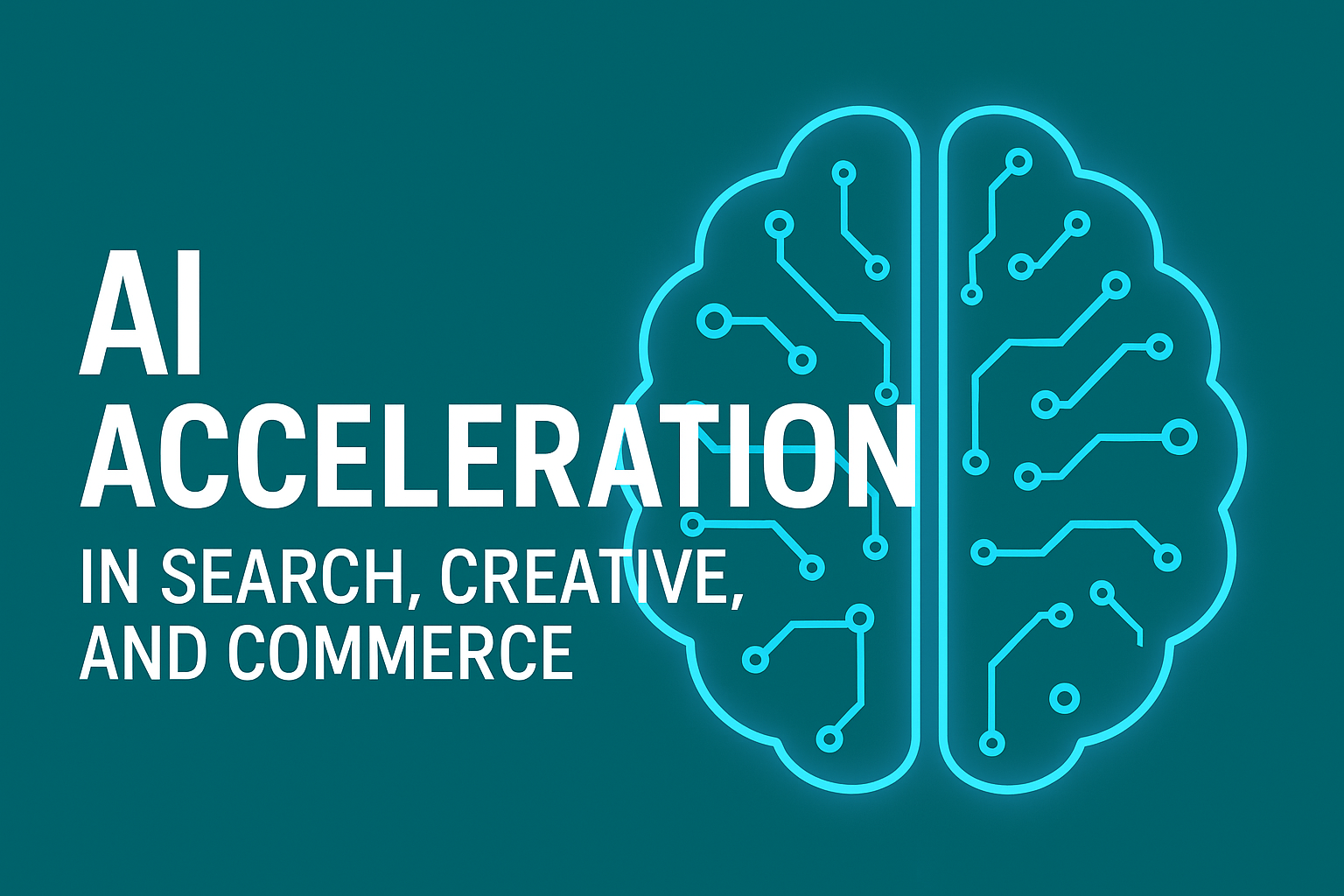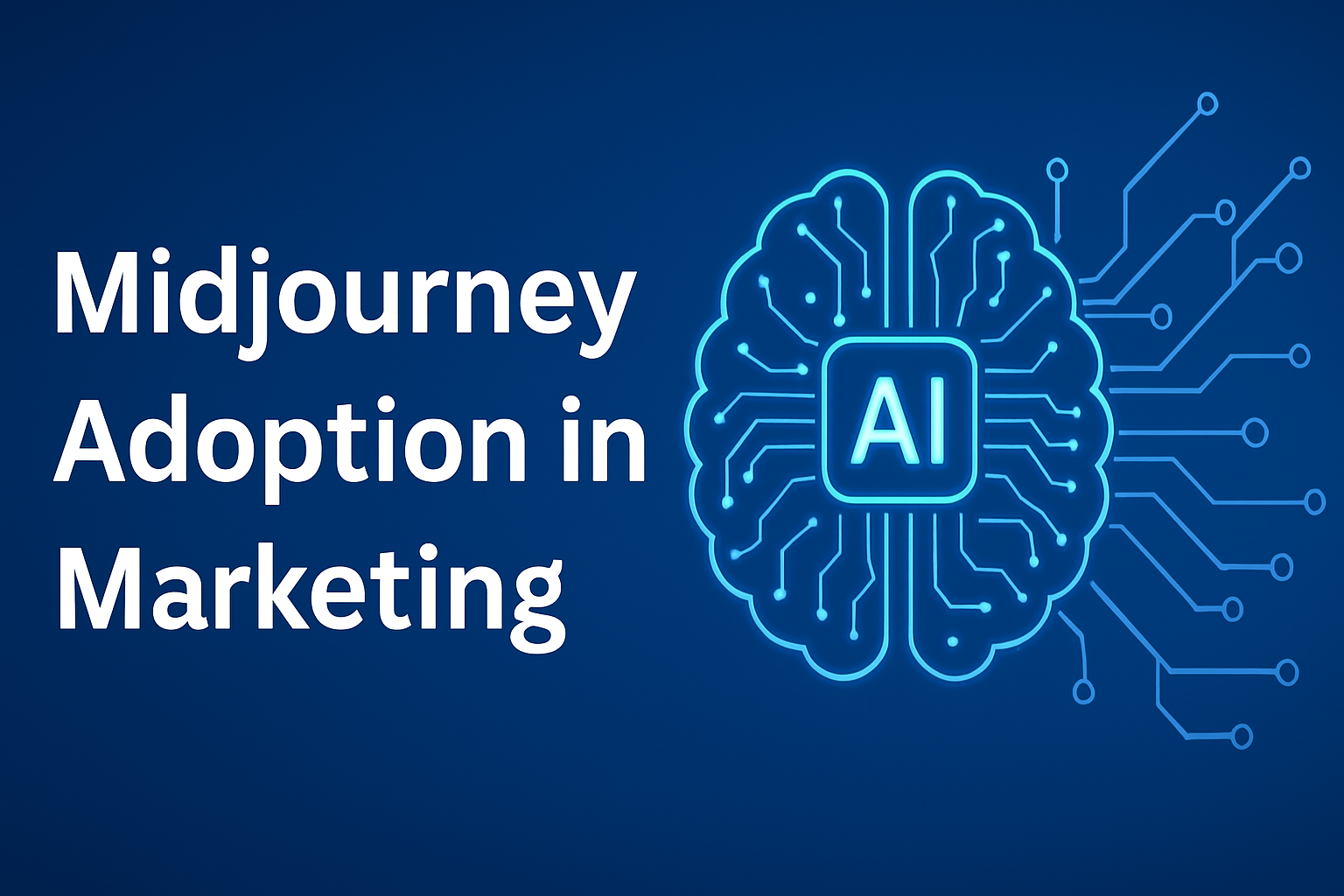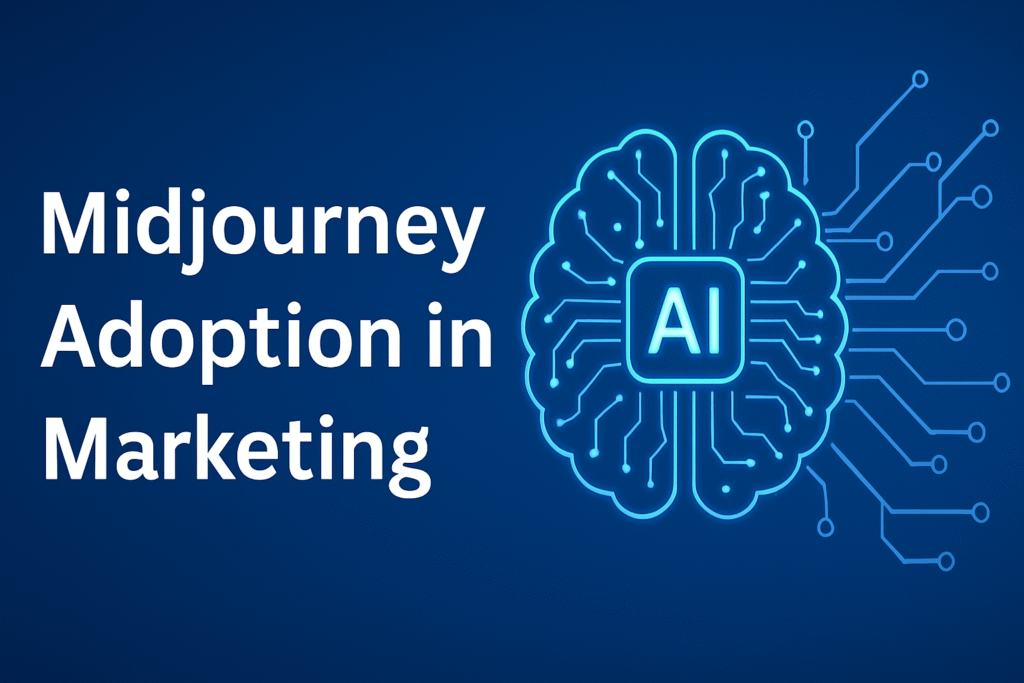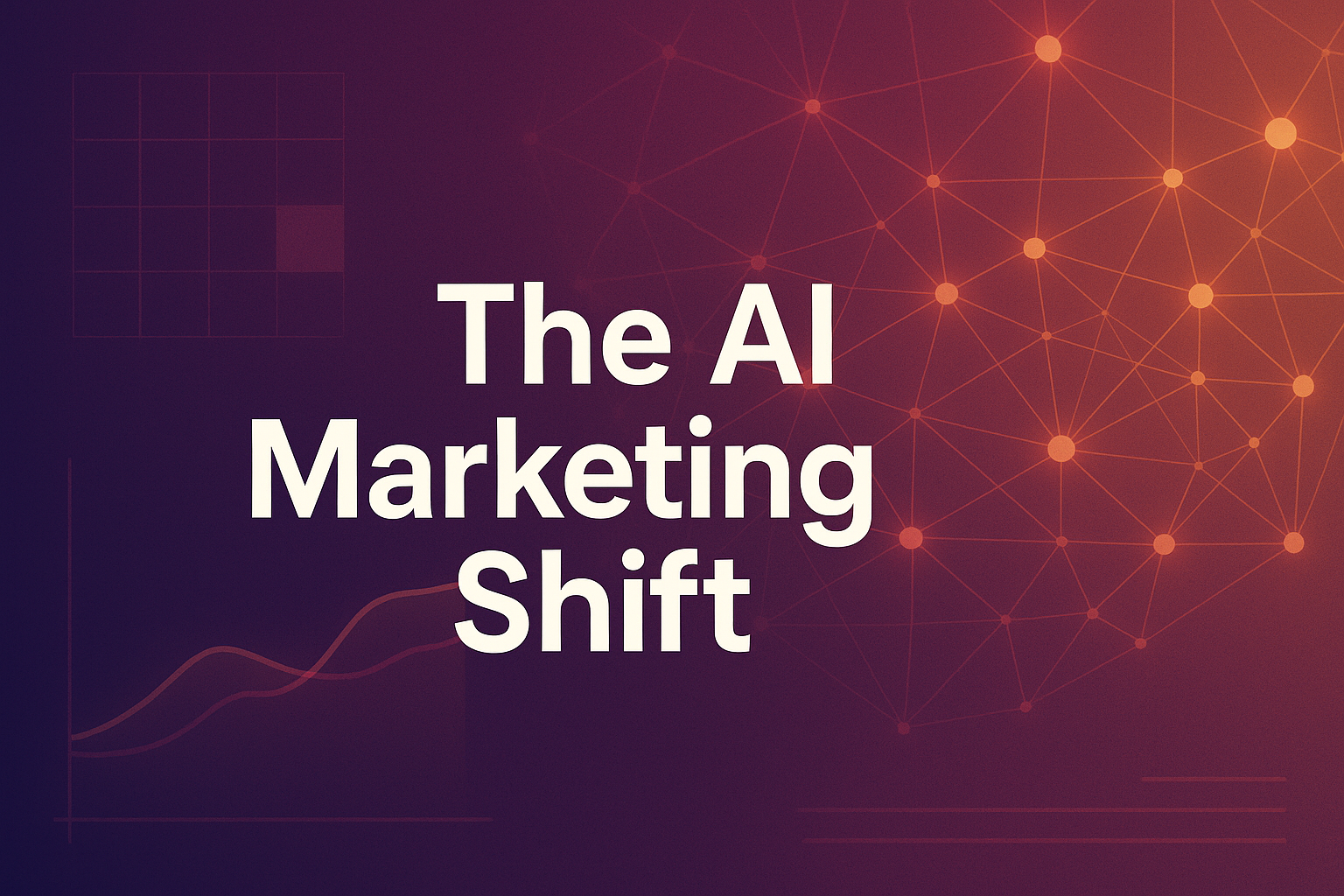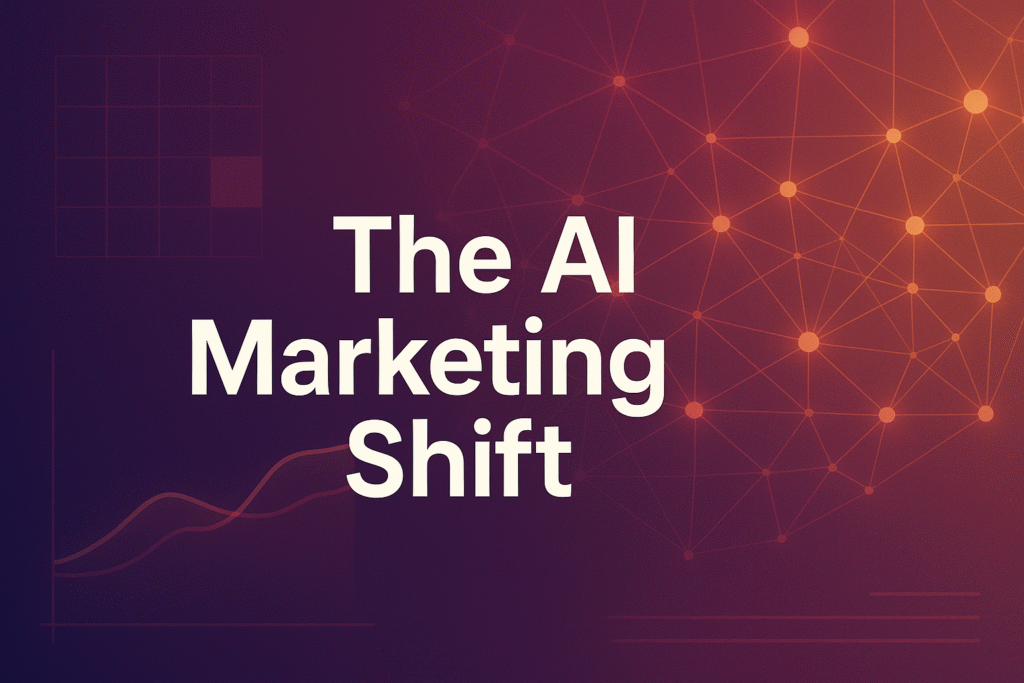AI has moved from “interesting assist” to a quiet operator embedded in everyday marketing work. GPT-4’s larger context window lets teams keep strategy, research, and long-form assets in one thread so the narrative actually holds together. Adobe’s Firefly introduces brand-safe generative imagery to comping and production, trimming cycles without creating IP risk. LinkedIn’s AI-assisted job descriptions tighten employer-brand language in the same ecosystem where prospects evaluate you. And Midjourney’s latest photorealism makes the jump from concept to carousel feel like one step, not seven.
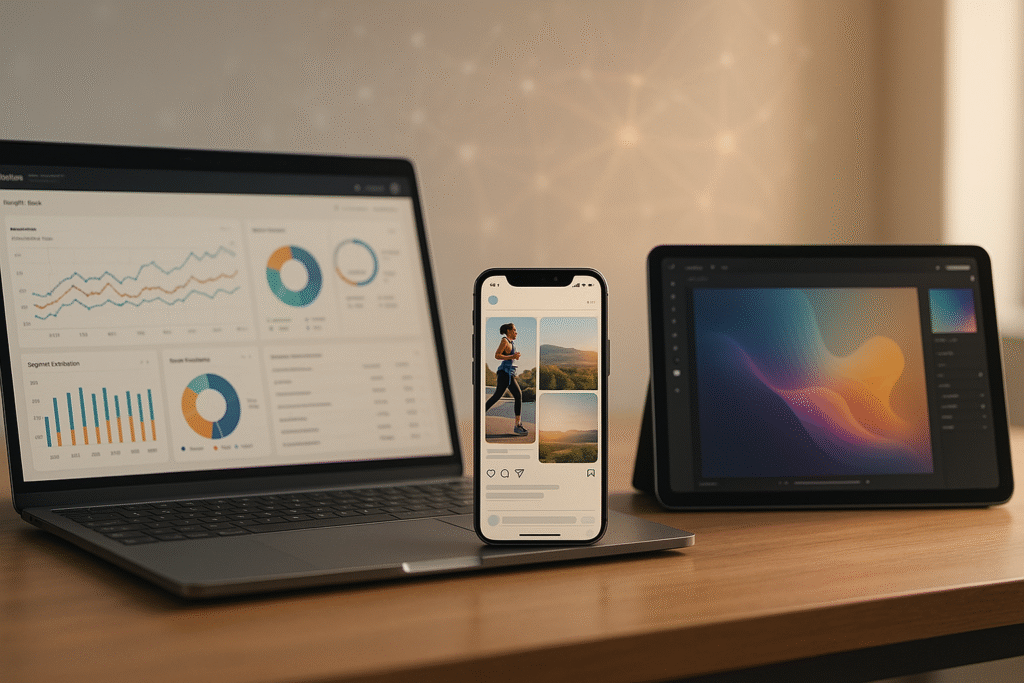
For B2B teams, the practical win is orchestration. Long briefs, customer insights, competitive notes, and brand standards can live in a single GPT-4 conversation and come back as a coherent proposal or thought-leadership draft. SEO leads pair that with AI-assisted content gap analysis to map intent clusters and prioritize coverage that actually compounds authority. Design moves in parallel: diagrams and supportive visuals are generated inside brand-safe creative tools, so product marketing, sales enablement, and content ops finally run in lockstep.
All of this matters because the stack buys you speed and consistency. Put GPT-4 to work turning research and briefs into coherent long-form; use Firefly or Midjourney to collapse concept-to-creative; and let open-time personalization keep the feed and the inbox telling the same story. Track cycle time per asset, the share of on-brand outputs, non-brand organic movement on your priority clusters, carousel engagement, and email CTR—then double down on what clearly compounds.
For B2C brands, the lift is visual speed. Midjourney’s tighter prompt-following accelerates concepting for ads and social, while Firefly’s rights-clear generation and edit tools keep creative on-brand and legally clean. Carousels that used to require hours of back-and-forth can be spun up in minutes by pairing AI ideation and copy with template-driven design workflows. The story extends into email with dynamic image personalization at open time—product angles, offers, and visuals adapt per recipient based on live data—so the feed and the inbox stay in a single, consistent narrative.
Underneath the workflow changes is adoption at scale. GPT-4 rolled into production use across industries within weeks of launch. Firefly’s early beta saw massive asset creation, a signal that creative teams were ready for brand-safe generation. Platform-native AI—from conversational search experiences to AI-drafted job posts—keeps arriving where marketers already work, which is why adoption keeps climbing: less onboarding friction, more immediate value. The through-line: AI is moving closer to the work—inside the writing, the comping, and the posting—so your time can move back to positioning, creative direction, and channel strategy.
Best Practice Spotlight
Nike-Style Integrated AI Campaigns: GPT-4 Narrative + Brand-Safe Visuals + Real-Time Personalization
A global sports brand can combine GPT-4 for multilingual, context-rich storytelling with Adobe Firefly for on-brief, brand-safe visuals, then personalize everything at open-time through a platform like Movable Ink. Copy and creative iterate quickly, stay on-brand, and adapt to each recipient’s context the moment they engage—without brittle, net-new workflows. Keep a human review loop for voice, claims, and compliance; maintain a lightweight “AI edit spec” so speed never trades off against identity. Benefits include compressed creative cycles, a clearer rights posture while embracing generative imagery, higher engagement through context-relevant experiences across email/social/site, stronger loyalty via participatory content, and faster topic development by feeding SEO gap insights back into campaign themes.
Creative Consulting Concepts
B2B – The AI-Assisted Content Gap Accelerator
Challenge: A growth team needs to fortify topical authority across solution pages and thought leadership without adding headcount.
Execution: Run AI-driven content gap analysis on priority clusters (intent coverage, competitive deltas). Use GPT-4 to produce briefs and long-form outlines mapped to search intent and sales objections. Generate supportive diagrams and charts in Firefly for brand-safe visuals, and align employer-brand language with AI-drafted job posts so tone stays consistent across touchpoints.
Speculative Impact: Coverage depth could increase quickly, with non-brand organic and assisted conversions trending up as clusters harden.
Optimization Tip: Re-crawl quarterly, prune low-ROI topics, and tighten schema so AI-assisted summaries and emerging AI overviews favor your pages.
B2C – The Photoreal Carousel + Dynamic Email Loop
Challenge: A retail brand needs a steady cadence of high-quality carousels and story assets for launches and promos.
Execution: Use Midjourney for photoreal base concepts; refine in Firefly for cleanup, scene tweaks, and product consistency. Have GPT-4 generate caption sets and CTA variants by audience segment; extend the narrative into email with open-time dynamic image personalization so visuals and offers match each recipient’s context.
Speculative Impact: Asset throughput could double, with carousel engagement and email CTR improving as visuals and copy stay tightly aligned.
Optimization Tip: Maintain a prompt/preset library (lighting, palette, framing) so creative feels consistent even as volume scales.
Non-Profit – Donor Personalization Without Extra Headcount
Challenge: A lean communications team needs more stories and visuals to keep supporters engaged between major campaigns.
Execution: Draft supporter spotlights with GPT-4; convert each story into an Instagram/LinkedIn carousel using templates; personalize email imagery at open time with dynamic content tools to match donor segments (recency, cause, geography); reuse logic across web/mobile to avoid duplicate builds.
Speculative Impact: Email engagement could rise meaningfully, with repeat donations and share rates improving as storytelling stays relevant and tailored.
Optimization Tip: Refresh inputs monthly (cause priorities, performance data) so templates evolve with audience behavior.
Close the loop each month by reviewing cycle time, engagement, and non-brand organic movement on your target clusters — ship more of what compounds, cut what doesn’t.
References
OpenAI. (2023, March 14). GPT-4 technical report.
Version 1. (2023, March 14). OpenAI GPT-4 review.
Microsoft Bing Team. (2023, March 14). Confirmed: The new Bing runs on OpenAI’s GPT-4.
Adobe. (2023, March 29). Adobe Firefly beta updates.
Adobe. (2023, May 23). Generative AI as a creative co-pilot in Photoshop (Generative Fill).
Stokes, G. (2023, March 16). Midjourney v5 is out: How to use it.
LinkedIn Talent Solutions. (2023, March 15). LinkedIn tests AI-powered job descriptions.
Wei, Y. (2023, March 15). How LinkedIn is using AI to help write job descriptions.
Social Media Today. (2023). AI-powered carousel automation.
Movable Ink. (n.d.). Studio email personalization.
Khatib, I. (2023, February 17). What is Movable Ink?
Peterson, D. (2023, March 15). Universal data activation for cross-channel personalization.
Search Engine Journal. (2023). Content gap analysis & SEO.
Moz. (2023). AI tools for semantic content gap analysis.
Master of Code. (2023). ChatGPT statistics in companies.
Exploding Topics. (2023). Number of ChatGPT users.
Sixth City Marketing. (2023). AI marketing statistics (2025 compendium with 2023 data).
Statista. (2023). Popularity of generative AI in marketing (U.S.).
Influencer Marketing Hub. (2023). AI marketing benchmark report.
